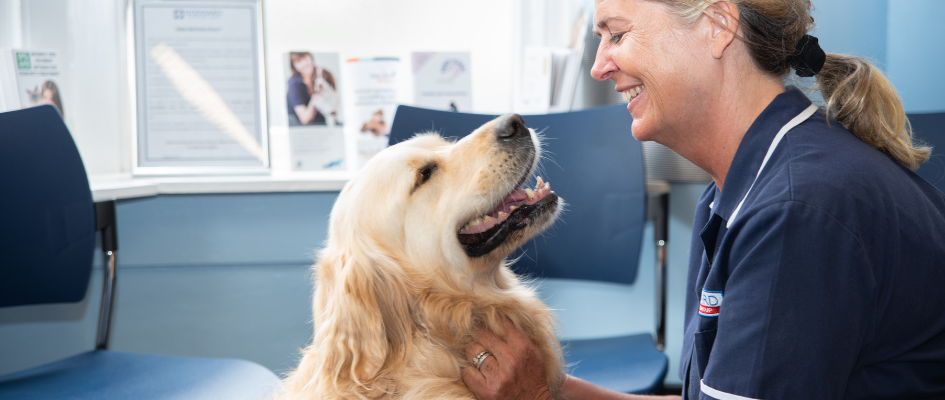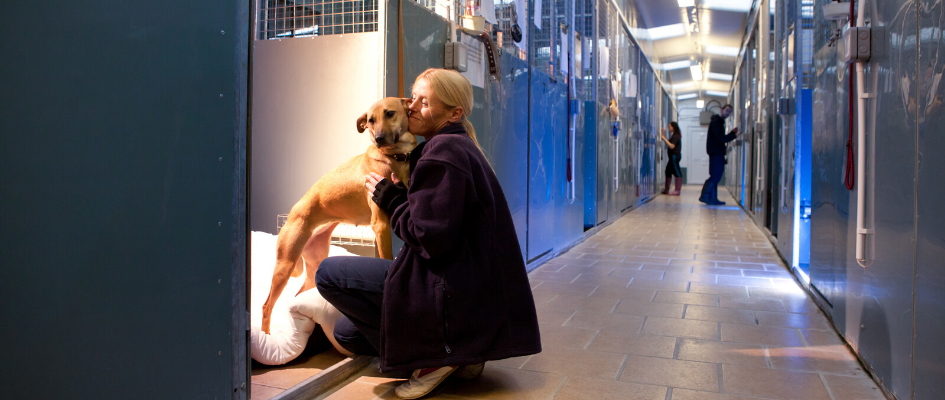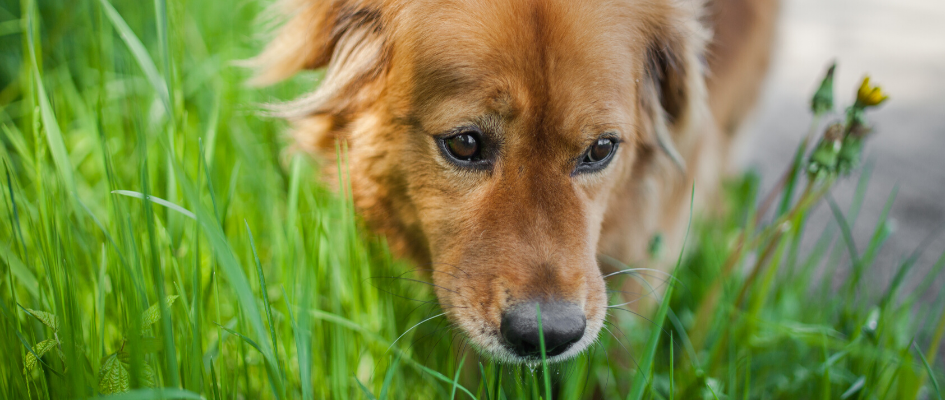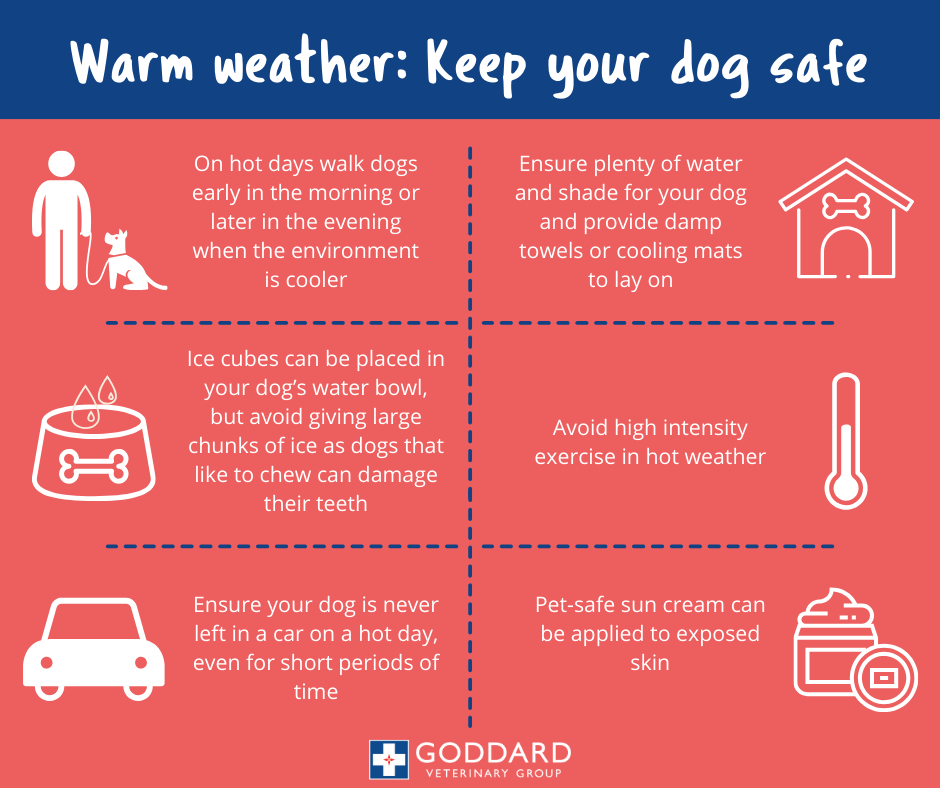It can be hard, we know! However, our vets and nurses can weigh your pet and assess their body condition score (BCS) which is a method of categorising weight, ranging from 1 (very thin) to 5 (obese), with 3 being normal and healthy. You can also do some checks at home:
- Look from above. Your pet should go in a little at the waist. If not, they may be overweight.
- Feeling along the side of the chest, you should be able to feel the ribs. They should not be under a thick layer of fat, but they should also not be sticking out.
- Feeling along the back of your pet, the spine and hip bones should not be sticking out but should be easy to feel.
- Look and feel underneath your pet for any bulges.
It’s estimated that around 60% of dogs and 39-52% of cats in the UK are overweight or obese. A report by Royal Canin found 80% of dog owners stated their pet was an ideal weight, but 40% knew neither their pet’s weight nor body condition score. 74% of cat owners believed their cat was an ideal weight, but nearly two thirds (65%) acknowledged not knowing their cat’s current weight and/or body condition score.
Does it matter if my pet is overweight?
Pets who are a healthy weight are more likely to enjoy a happy and healthy life. Here are some reasons why:
- Older pets often suffer from degenerative joint disease (arthritis). Being overweight can speed the progression of arthritis and the pain caused, ultimately reducing the quality and quantity of their life. Simple mechanics mean a dog weighing 20 kg that should weigh 15kg will place 33% more force through each limb. Even a small weight reduction can make a huge difference to their quality of life.
- Being overweight increases the chance of diabetes in dogs and cats. Diabetes shortens life, can come with complications, and usually requires lifelong insulin injections. This poses a significant time and financial commitment for owners.
- Obesity is not known to increase the risk of coronary heart disease as in people, but it does have adverse effects on cardiac and pulmonary function and blood pressure.
- Operations are more risky for all pets that are overweight.
- Rabbits naturally eat a part of their faeces known as caecotrophs, which helps recycle enzymes enabling them to digest roughage. If they are overweight, they will not be able to groom or to reach their bottom to eat these caecotrophs.
- Obese or overweight cats are more at risk of hepatic lipidosis and lower urinary tract disease, both of which can be very serious or even fatal.
What can I do?
We can check your pet’s body condition score and weight, and perform an examination looking for other health issues, especially ones that may be weight related.
We can recommend a regime to help your pet lose weight, but it is important not to lose weight too rapidly. We aim for no more than 1-2% of their starting weight each week.
If they are only slightly overweight then feeding a bit less, or changing to a lower-calorie food may be all that’s needed. Pets needing more drastic weight loss may need a special diet, as reducing their food too much may mean they go hungry or with insufficient nutrients. A food diary for a week may highlight where your pet is getting extra calories. Each weight loss plan we suggest is individual and would involve exercise as part of the weight loss regime, but here are some general points:
- Good pet food companies produce food for varying life-stages, as a developing pup, for example, will have different needs to an ageing dog.
- Take the nutritional information of your current food along to your appointment and our team can assess if it’s appropriate for your pet.
- Feeding a complete commercial pet food is the easiest way to ensure your pet gets the nutrients they need. Use feeding guidelines and weigh the food out. It seems obvious, but pets that eat too much get fat.
- Treats and scraps on top of a complete food will unbalance the diet and most likely be turned into fat.
- Pet lifestyle makes a difference. In the same way, an elite athlete will need more calories than an office-worker, a working greyhound or sheepdog will need more calories than a sedentary dog.
- If considering a diet change, do it slowly to avoid upsetting the gut.
Dogs:
- Prefer regular mealtimes. Ideally, split your dog’s daily food into two equal-sized meals, meaning your dog will be less hungry and eat more slowly. It may also help them sleep and make it less tempting to treat.
Cats:
- Are obligate carnivores, meaning they cannot survive without meat. They cannot produce an amino acid called taurine (a protein building block) which can only be found in meat. Without it, they can develop a severe heart condition called dilated cardiomyopathy and even blindness. Their gut is not designed to digest a plant-based diet, just like a cow’s gut is not designed for a meat-based diet.
- Prefer to graze, eating 8-16 times daily, so have food available all the time weighing out the daily quota. Most cats are very good at self-regulating but some are greedy, and with these cats, meals may be needed.
- That drink milk often gets tummy upsets due to the lactose.
Rabbits should:
- Eat around 50% of the time so they need at least their body size in good quality hay per day to keep boredom at bay, to keep their gut health and to keep their continually growing teeth worn down.
- Have a handful of fresh vegetables, morning and evening. They love carrots, but as they are high in sugar, use them sparingly.
- Have an eggcup of commercial rabbit nuggets (NOT muesli-type mix) once a day if under 3.5kg, or twice a day if larger. If fed too many nuggets, they may eat less hay and veg which are both vital for rabbit health.




